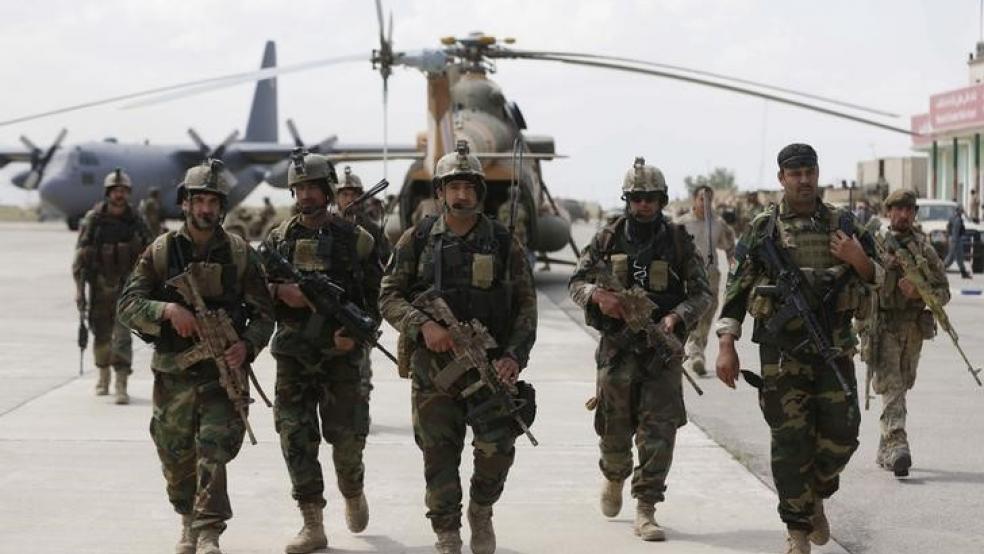Faced with a resurgent Taliban, the Trump Administration is considering a ramp-up of the long-running war in Afghanistan.
Elements of the strategy under review include additional U.S. ground troops, with the Pentagon determining just how many more soldiers are needed. Right now, there are about 8,400 U.S. troops in-country, and The Washington Post said 3,000 more would initially be added under the plan. Other news organizations suggested the number might be as high as 5,000.
Related: $780 Billion US Dollars Later, the Taliban Is Gaining Ground in Afghanistan
In addition, battlefield restrictions on American military advisers would be removed. NATO, which has about 5,000 non-U.S. troops in Afghanistan, is also “assessing a request from the alliance's military authorities to send more troops,” Reuters reported on Wednesday.
It quoted NATO Secretary General Jens Stoltenberg as saying after a meeting with British Prime Minister Theresa May: “We will make decisions on the scale and scope of the mission within weeks but this is not about returning back to a combat operation in Afghanistan."
The Post said President Trump is expected to decide whether to push for a more robust presence in Afghanistan before a NATO summit in Brussels on May 25 that he is scheduled to attend.
The Costs of War Project at Brown University’s Watson Institute estimated last September that the total payout by U.S. taxpayers for wars in Iraq, Afghanistan/Pakistan, Syria, and Yemen, plus the care of veterans for about the next 35 years, amounts to some $4.79 trillion.
Related: Trump’s Next Challenge: Russia Returns to Afghanistan
Professor Catherine Lutz, a military expert who is co-director of the Costs of War Project, said that “our estimate is that the war in Afghanistan accounts for 45%, or roughly $2.16 trillion, of the total spent and obligated…funds.”
Within the White House, The Post said, the proposal to ratchet up America’s commitment is being referred to by opponents as “McMaster’s War” because the chief proponent of the strategy is the National Security Advisor, General H.R. McMaster, who served in Afghanistan.
After more than 15 years, the conflict in Afghanistan is generally conceded to be unwinnable, so the goal of having more U.S. boots on the ground is to put pressure on the Taliban and bring it to the bargaining table.
Politico said that besides McMaster, “most of Trump's top military advisers — including the top commander in Afghanistan, Lt. Gen. John Nicholson — are advocating the military surge to aid Afghan security forces, which have suffered thousands of casualties since taking the lead in the fight over three years ago.”
At the end of last month, a Taliban attack on an Afghan army base killed about 140 unarmed soldiers who were headed to lunch after Friday prayers.
Related: US Taxpayers Are Paying to Guard an Abandoned Hotel in Afghanistan
In a 2015 study on American aid to Afghanistan, Lutz and co-author Sujaya Desai found that more than $100 billion in U.S. taxpayer dollars had been spent on “reconstruction,” but about 70 percent of those funds had gone to support and train Afghan military and police.
“How you transfer money like that can have unintended consequences such as [fostering] corruption,” Lutz said.
President Trump has frequently argued against America’s continued involvement. In 2013 he tweeted: "We have wasted an enormous amount of blood and treasure in Afghanistan," and a buildup of U.S. forces there would seem to run counter to his campaign pledges to put the rebuilding of America first.





